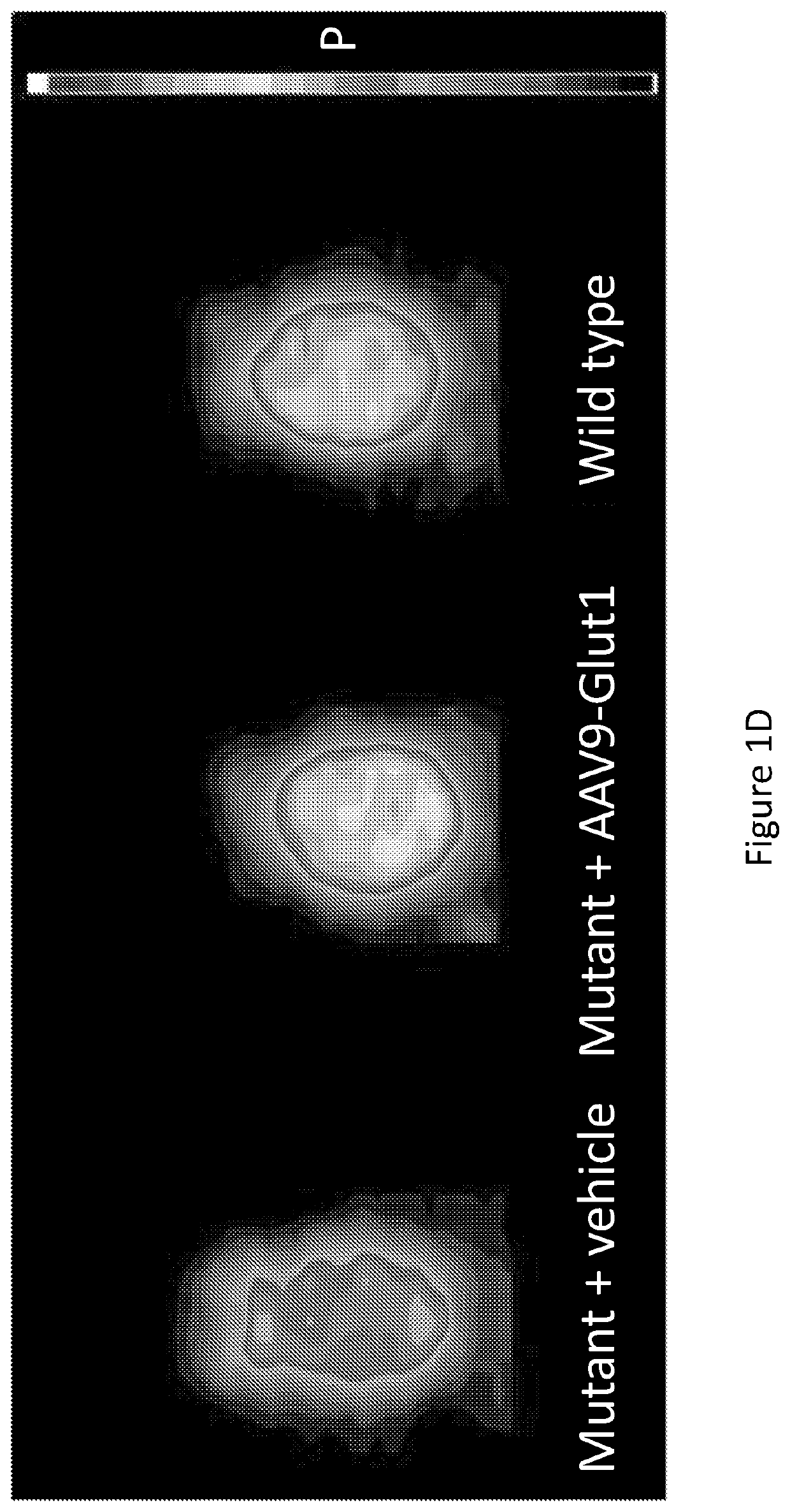Slc2a1 lncrna as a biologic and related treatments and methods
a technology of slc2a1 and lncrna, which is applied in the field of slc2a1 lncrna as a biologic and related treatments and methods, can solve the problems of grave consequences for proper cerebral development and function, significant neurological disorders with correspondingly pronounced health and societal costs attached, and little progress in developing optimal treatment for the disease. , to achieve the effect of restoring glut1 transpor
- Summary
- Abstract
- Description
- Claims
- Application Information
AI Technical Summary
Benefits of technology
Problems solved by technology
Method used
Image
Examples
example 1
letion Averts Glut1 DS in a Mouse Model of the Disease
[0146]It has been demonstrated that restoring Glut1 to Glut1 DS model mice by means of an AAV9 vector harboring the Glut1 gene was remarkably effective in thwarting disease (Tang et al. 2017). Briefly, the study demonstrated that systemic delivery of an AAV9-Glut1 construct to PND3 mutant mice raised Glut1 levels, improves motor performance, mitigates the hypoglycorrhachia (low cerebrospinal fluid—CSF—glucose) characteristically observed in the disease, enhanced the ability of the brain to absorb glucose, prevented the micrencephaly (reduced brain size) typical of Glut1 DS and ameliorated the seizures that the mice suffer as a consequence of Glut1 haploinsufficiency (FIG. 1).
[0147]The study also revealed that low Glut1 levels result in a profound diminution of the brain microvasculature. This last defect was also corrected upon Glut1 repletion. Augmenting Glut1 levels at two weeks, a time point representing the early symptomatic ...
example 2
ssion of the Glut1 Gene is Regulated by a Novel Natural Antisense Transcript
[0148]In the process of testing the AAV9 constructs in human fibroblasts and while simultaneously investigating the cause of a Glut1 DS-like patient with no detectable mutations in the Glut1 coding sequence, a natural antisense transcript partially overlapping exon 1 of Glut1 and extending into the promoter region of the gene was discovered. 3′RACE experiments indicated that there are, in fact, two alternatively spliced transcripts that differ in the number of exons that each contains (FIG. 2A). Bioinformatic analysis suggested that neither transcript is capable of coding for a protein. This, combined with the size of the transcripts (greater than 200 bp) and their orientation (antisense) relative to Glut1 define them as long non-coding RNAs (lncRNAs). In keeping with the tendency of lncRNAs to be less evolutionarily conserved than protein coding genes (Marques and Ponting 2009; Johnsson et al. 2014) bioinfo...
example 3
ts of SLCA1-IncRNA on Glut Activity
[0153]A promoter fragment containing 6 kb of the Glut1 upstream sequence was cloned into a luciferase-containing vector (pGL4.1). In parallel, exons 1-3 of the antisense transcript was closed into an expression vector. The 6 kb Glut1 promoter plasmid was then transfected into HEK-293 cells alone or with the plasmid containing the antisense transcript. The results showed, first that the 6 kb Glut1 promoter fragment was capable of driving strong luciferase expression and, second, that such expression was enhanced approximately 40% in the presence of the antisense transcript (FIG. 3). These results provided strong evidence, in vitro, that the antisense transcript was indeed able to regulate (enhance) expression from the promoter of the Glut1 gene and showed that the transcript is one novel means of augmenting Glut1 gene activity for the purpose of treating conditions such as Glut1 deficiency syndrome that result from low Glut1 levels. Additionally, th...
PUM
| Property | Measurement | Unit |
|---|---|---|
| diameters | aaaaa | aaaaa |
| size | aaaaa | aaaaa |
| volume | aaaaa | aaaaa |
Abstract
Description
Claims
Application Information
 Login to View More
Login to View More - R&D
- Intellectual Property
- Life Sciences
- Materials
- Tech Scout
- Unparalleled Data Quality
- Higher Quality Content
- 60% Fewer Hallucinations
Browse by: Latest US Patents, China's latest patents, Technical Efficacy Thesaurus, Application Domain, Technology Topic, Popular Technical Reports.
© 2025 PatSnap. All rights reserved.Legal|Privacy policy|Modern Slavery Act Transparency Statement|Sitemap|About US| Contact US: help@patsnap.com



